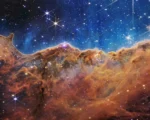Recent findings in cosmology have reignited debates about the rate at which the universe is expanding, suggesting that discrepancies in measurements might point to flaws in current theoretical models. While the expansion of the universe has been a cornerstone of modern physics, data from advanced observational tools, including the Hubble Space Telescope and the James Webb Space Telescope, have revealed inconsistencies that challenge long-standing beliefs. These discrepancies have sparked a renewed focus on understanding whether the current cosmological framework can truly explain the observed data.
A new study published in The Astrophysical Journal Letters has added significant weight to the argument for these inconsistencies, particularly concerning the Hubble constant — a key factor in measuring the universe’s expansion. Using data from the Dark Energy Spectroscopic Instrument (DESI), researchers have found an expansion rate of 76.5 km/s/Mpc from observations of the Coma galaxy cluster, located approximately 320 million light-years away. This result stands in stark contrast to previous measurements from the cosmic microwave background (CMB), which suggested a lower expansion rate of 67 km/s/Mpc. The disagreement between these values has fueled growing concerns that our understanding of the universe’s expansion may require a fundamental reevaluation.
The disagreement stems primarily from two different approaches used to measure the Hubble constant. Early-universe measurements taken from the CMB align with predictions from the standard cosmological model. However, data obtained from later cosmic periods, particularly using Cepheid variable stars and Type Ia supernovae, consistently yield higher expansion rates. The tension between these two methods has deepened over time, with ongoing efforts by teams like DESI to refine measurements, but the discrepancies persist. These contrasting readings have introduced significant uncertainty into the current cosmological framework.
This ongoing debate has profound implications for our understanding of physics and the universe. If these measurements are correct, it suggests that there may be aspects of dark energy, gravity, or the fundamental laws of physics that we have yet to fully comprehend. The mystery of the universe’s expansion rate is one of the most pressing challenges in modern science, and resolving this paradox could lead to groundbreaking shifts in our understanding of both the cosmos and the laws that govern it. As new data continues to emerge, scientists are eagerly working to address these contradictions, hoping to find a unifying theory that can reconcile these findings and advance our knowledge of the universe.


















